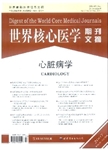急性缺血性卒中患者的系统溶栓
Ultrasound-enhanced systemic thrombolysis for acute ischemic stroke作者机构:MSB 7 .044 University of Texas 6431 Fannin St. Houston TX 77030 United States Dr.
出 版 物:《世界核心医学期刊文摘(心脏病学分册)》 (Digest of the World Core Medical Journals(Cardiology))
年 卷 期:2005年第1卷第4期
页 面:25-26页
学科分类:1002[医学-临床医学] 100204[医学-神经病学] 10[医学]
主 题:急性缺血性卒中 颅多普勒超声 大脑中动脉闭塞 血管再通 目标组 等级评分 结果良好 临床康复 安慰剂 次要指标
摘 要:BACKGROUND: Transcranial Doppler ultrasonography that is aimed at residual obs tructive intracranial blood flow may help expose thrombi to tissue plasminogen a ctivator (t-PA). Our objective was to determine whether ultrasonography can saf ely enhance the thrombolytic activity of t-PA. METHODS: We treated all patients who had acute ischemic stroke due to occlusion of the middle cerebral artery wi th intravenous t-PA within three hours after the onset of symptoms. The patient s were randomly assigned to receive continuous 2-MHz transcranial Doppler ultra sonog(raphy the target group) or placebo(the control group). The primary combine d end point was complete recanalization as assessed by transcranial Doppler ultr asonography or dramatic clinical recovery. Secondary end points included recover y at 24 hours, a favorable outcome at three months, and death at three months. R ESULTS: A total of 126 patients were randomly assigned to receive continuous ult rasonography(63 patients) or placebo(63 patients). Symptomatic intracerebral hem orrhage occurred in three patients in the target group and in three in the contr ol group. Complete recanalization or dramatic clinical recovery within two hours after the administration of a t-PA bolus occurred in 31 patients in the target group(49 percent), as compared with 19 patients in the control group(30 percent ; P=0.03). Twenty-four hours after treatment of the patients eligible for follo w-up, 24 in the target group(44 percent) and 21 in the control group (40 percen t) had dramatic clinical recovery(P=0.7). At three months, 22 of 53 patients in the target group who were eligible for follow-up analysis (42 percent) and 14 o f 49 in the control group(29 percent) had favorable outcomes (as indicated by a score of 0 to 1 on the modified Rankin scale)(P=0.20). CONCLUSIONS: In patients with acute ischemic stroke, continuous transcranial Doppler augments t-PA-indu ced arterial recanalization, with a nonsignificant trend toward an increas



